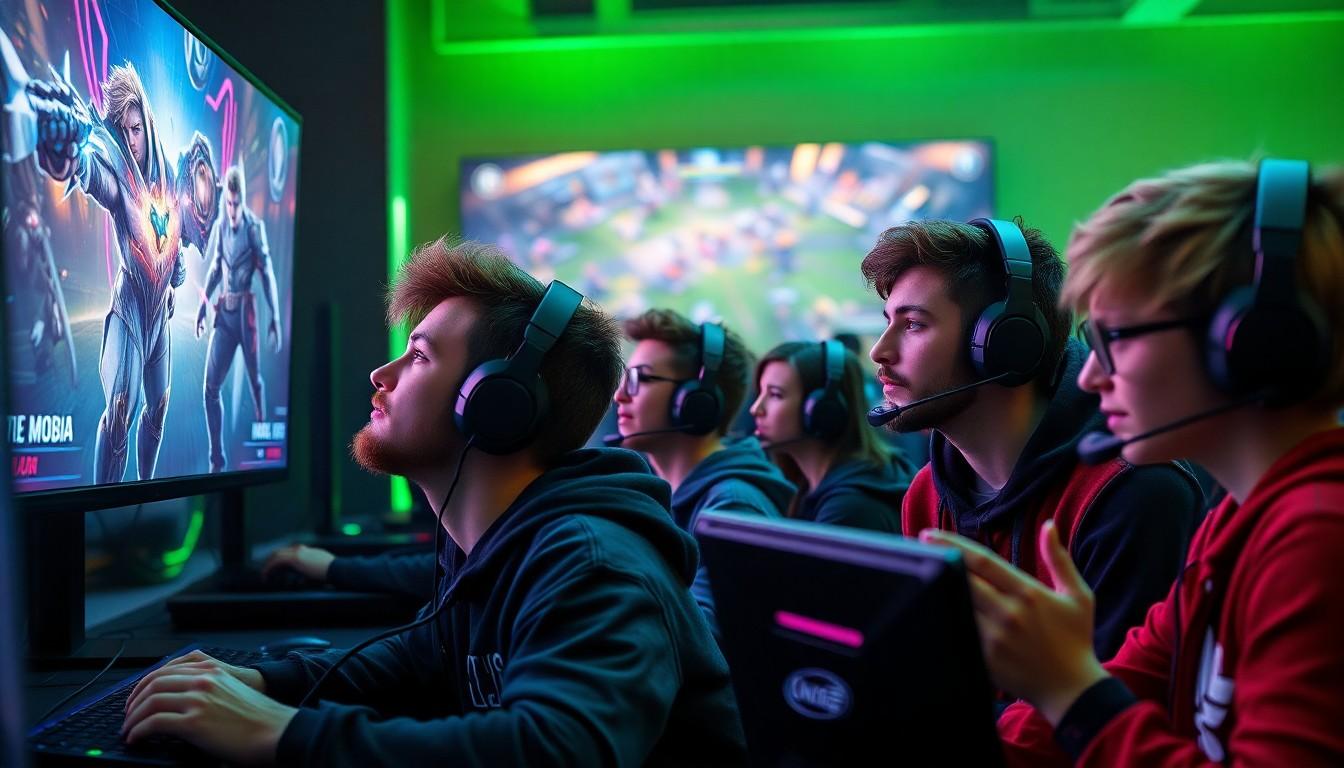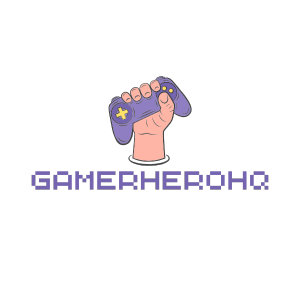In the world of gaming, few genres spark as much passion and rivalry as MOBA gaming. Imagine diving into a digital arena where strategy, teamwork, and a sprinkle of chaos collide. It’s like chess mixed with a high-energy sport, where players take on the roles of unique heroes, each with their own quirks and powers. The thrill of outsmarting opponents while coordinating with allies makes every match a heart-pounding adventure.
Overview Of MOBA Gaming
MOBA gaming combines strategy, teamwork, and competition in unique ways. Players control individual characters, known as champions or heroes, each equipped with special abilities that influence gameplay. Matches typically feature two teams, commonly consisting of five players each, aiming to destroy the opponent’s base while defending their own.
This genre encourages strategic planning and teamwork. Players select heroes that complement their team’s strengths and weaknesses. Understanding roles—such as damage dealers, tanks, or support—is essential for success. The dynamic battlefield demands quick decision-making and adaptability during matches.
Map awareness plays a crucial role in MOBA games. Each map contains lanes, jungles, and objectives, which contribute to the overall strategy. Securing these objectives, such as towers or powerful creatures, often provides strategic advantages. Ganking, or ambushing opponents, is another tactic that can shift the momentum of a game.
Competitive play thrives in the MOBA genre. Esports tournaments attract millions of viewers and significant prize pools. Titles like League of Legends and Dota 2 exemplify the competitive spirit, drawing in both casual gamers and professional players.
Rewards in MOBA gaming extend beyond victory. Players gain experience and in-game currency, allowing them to unlock new characters or skins. This progression system enhances player engagement and fosters a sense of achievement.
The thrilling essence of MOBA gaming lies in its blend of strategy, teamwork, and competition. Engaging heroes, dynamic maps, and churning rivalries create a captivating experience. Adrenaline-pumping matches excite both players and spectators in this rapidly growing genre.
History Of MOBA Gaming

MOBA gaming has roots that extend back to early real-time strategy games. As genres evolved, unique gameplay mechanics emerged, leading to the formation of modern MOBA titles.
Origins And Evolution
The origins of MOBA gaming trace back to modded maps in games like StarCraft and Warcraft III. Custom maps such as Aeon of Strife and Defense of the Ancients (Dota) popularized team-based gameplay. These mods featured unique champions that players could control, fostering collaboration and competition. The appealing combination of strategy and individual skill attracted a dedicated player base. As interest grew, developers took inspiration from these mods, paving the way for future titles. Games like League of Legends and Heroes of the Storm emerged, further refining and expanding upon this innovative genre.
Key Milestones
Key milestones in MOBA gaming significantly shaped the genre’s trajectory. In 2003, the release of Dota sparked widespread interest, creating a template for future games. 2010 marked the launch of League of Legends, rapidly gaining millions of players and establishing itself as a dominant title. The International, a Dota 2 tournament initiated in 2011, introduced substantial prize pools, elevating competitive gaming visibility. In subsequent years, more titles emerged, such as Smite and Battlegrounds, showcasing the genre’s diversity. The formation of the MOBA esports community solidified the genre’s popularity, paving the way for a future filled with innovation and competition.
Gameplay Mechanics
MOBA gameplay mechanics revolve around character roles, skills, and dynamic map designs. Understanding these elements enhances the overall gaming experience.
Character Roles And Skills
In MOBA games, distinct character roles dictate gameplay strategies. Roles such as damage dealers, tanks, and support each serve a unique purpose within a team. Damage dealers focus on inflicting maximum harm, tanks absorb damage, and support characters enhance teammates’ abilities. Each hero possesses special skills that contribute significantly to the team’s success. Players must choose heroes that align with their strengths and complement their teammates. This synergy is crucial for achieving victory in matches.
Map Design And Objectives
Map designs in MOBA games emphasize strategic positioning and objectives. Each map features three main lanes, jungles, and key objectives for teams to secure. Objectives like towers and powerful creatures provide advantages that can shift momentum in a match. Players navigate lanes to engage opponents while maintaining awareness of jungle areas for ambush opportunities. Controlling these critical zones helps teams gain experience and resources necessary for overpowering rivals. Ultimately, effective map navigation and objective control shape the outcome of every battle.
Popular MOBA Games
Several titles stand out in the MOBA genre, each offering unique gameplay experiences and dedicated communities. Below are notable examples that showcase the diversity within this competitive landscape.
League Of Legends
League of Legends ranks as one of the most popular MOBAs globally. Each match includes two teams of five players vying to destroy the opponent’s Nexus. Regular updates introduce new champions and gameplay adjustments that keep the game fresh. Players engage in strategic planning, focusing on teamwork and individual skill. Seasonal events and esports tournaments enhance its competitive atmosphere, with massive audiences tuning in for events like the World Championship.
Dota 2
Dota 2 boasts significant influence in the MOBA sphere, offering in-depth mechanics and complex strategies. Players command a selection of over 120 heroes, each with unique abilities, in matches that demand coordination and strategy. This title operates on a free-to-play model, attracting millions. The International, Dota 2’s flagship tournament, features some of the largest prize pools in esports history, drawing attention and admiration from fans worldwide.
Heroes Of The Storm
Heroes of the Storm brings a different experience by combining characters from Blizzard’s various franchises. This game focuses on team-based gameplay across diverse maps with unique objectives rather than simply destroying a base. Players collaborate using familiar Heroes like Diablo and Tracer, creating a blend of strategies. Regular updates and seasonal events keep the community engaged, while its accessibility attracts both newcomers and veterans of the genre.
Competitive Scene
The competitive scene in MOBA gaming thrives on high-stakes tournaments and dynamic community engagement. Esports tournaments showcase the pinnacle of skill and strategy, drawing massive audiences both online and in-person.
Esports Tournaments
Major tournaments like The International and the League of Legends World Championship attract millions of viewers globally. Prize pools often exceed $40 million, incentivizing top players and teams to compete at the highest level. Each event features intense matches filled with strategic gameplay and nerve-wracking moments. Teams train relentlessly, sharpening their skills to prepare for these competitive arenas. Notable teams such as Team Liquid and T1 dominate the scene, contributing to ongoing rivalries and fan engagement. Spectators relish the opportunity to watch their favorite players execute flawless strategies and impressive teamwork.
Game Balance And Updates
Game balance and updates play a critical role in maintaining a fair competitive environment. Developers frequently release patches to adjust character abilities and item statistics, ensuring no single champion dominates the meta. These updates respond to player feedback and dataset analysis, fostering a more balanced gameplay experience. Adaptations not only keep the game fresh but also impact tournament strategies, as teams must quickly adjust to new dynamics. Developers emphasize regular communication with the community to address concerns and improve gameplay. Through continuous evolution, MOBA games remain engaging and competitive, attracting both veteran players and newcomers.
Conclusion
MOBA gaming stands as a thrilling fusion of strategy and teamwork that captivates players worldwide. Its dynamic nature encourages constant adaptation and collaboration among teammates. With a rich history and a vibrant competitive scene, the genre continues to evolve and attract a dedicated community.
As players navigate intricate maps and engage in intense battles, they experience the rush of outsmarting opponents and achieving victory together. The future of MOBA gaming looks bright with ongoing innovations and an ever-growing esports presence. Whether a seasoned pro or a newcomer, the excitement and challenges of MOBA gaming promise endless enjoyment for all.

